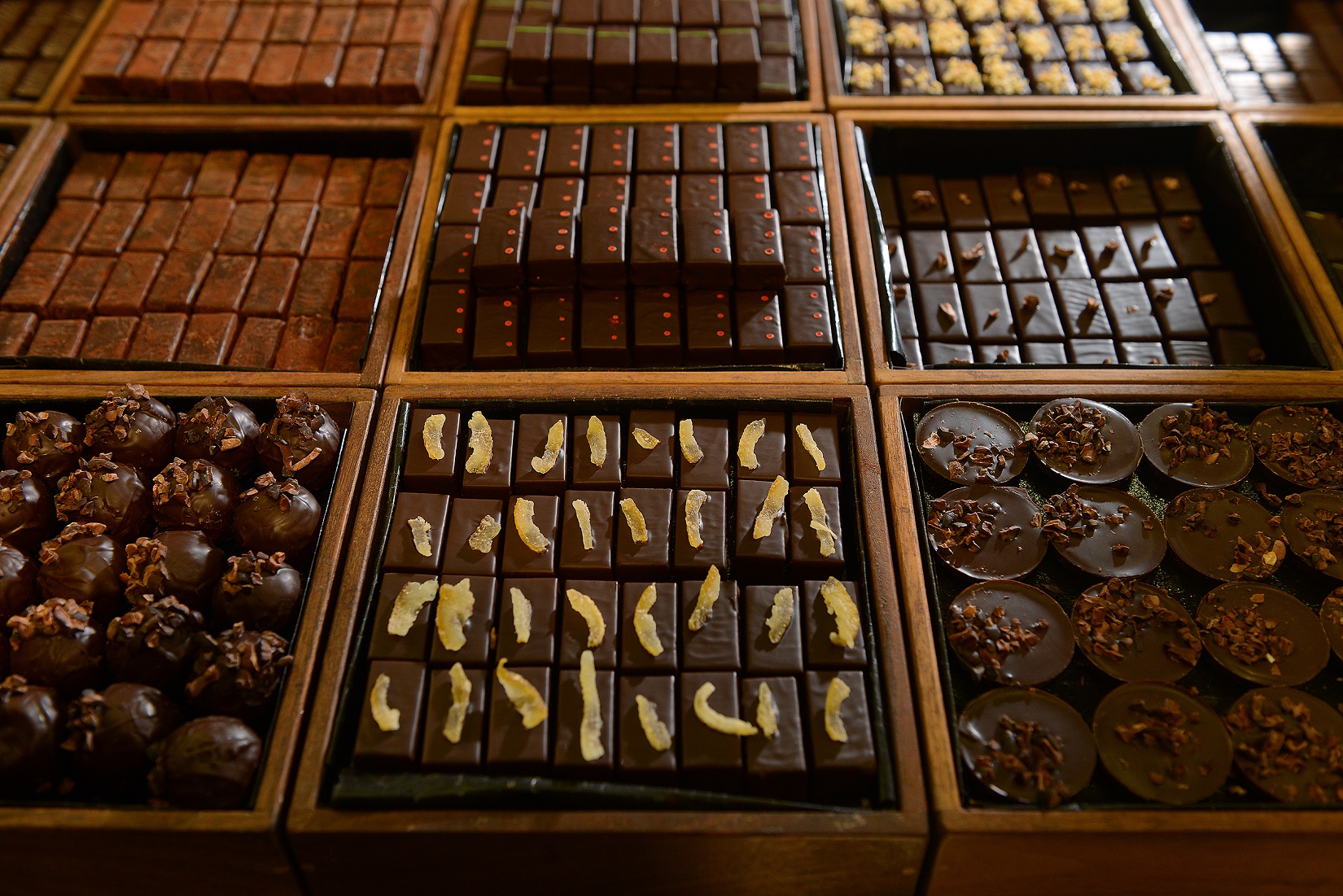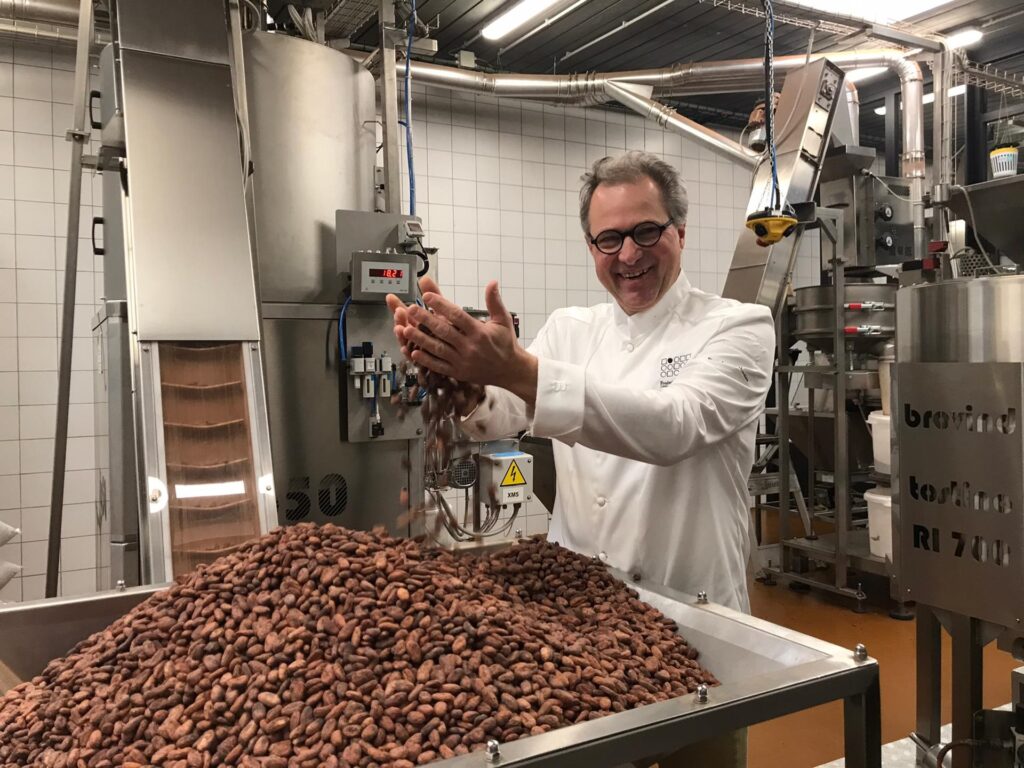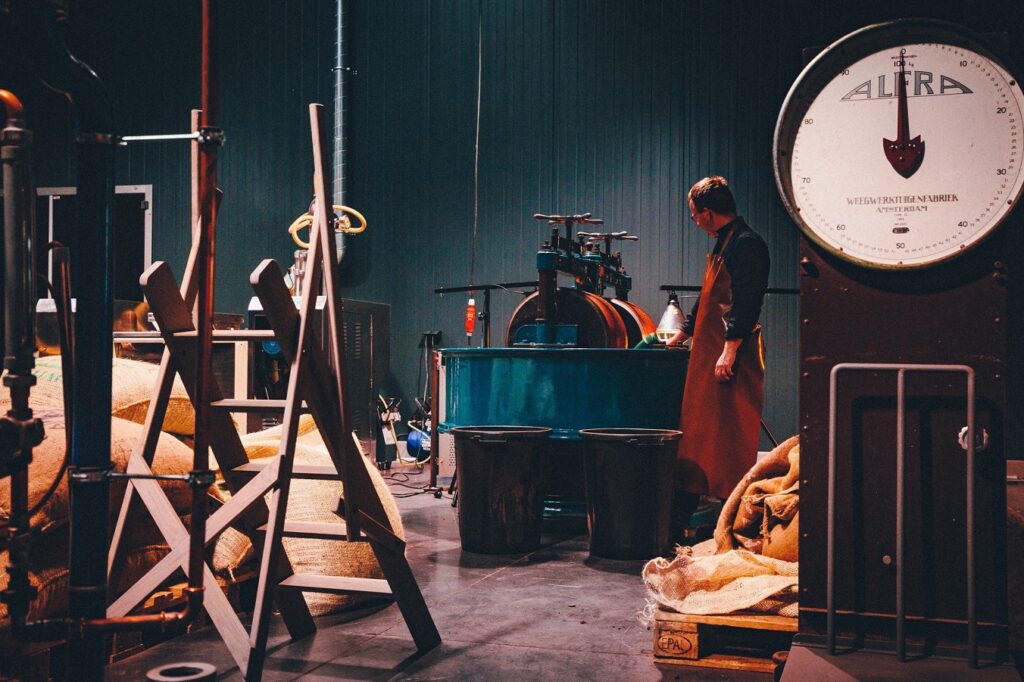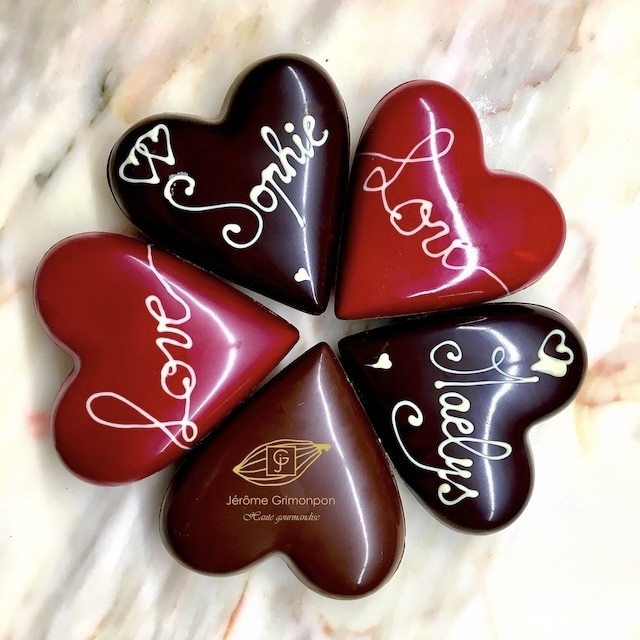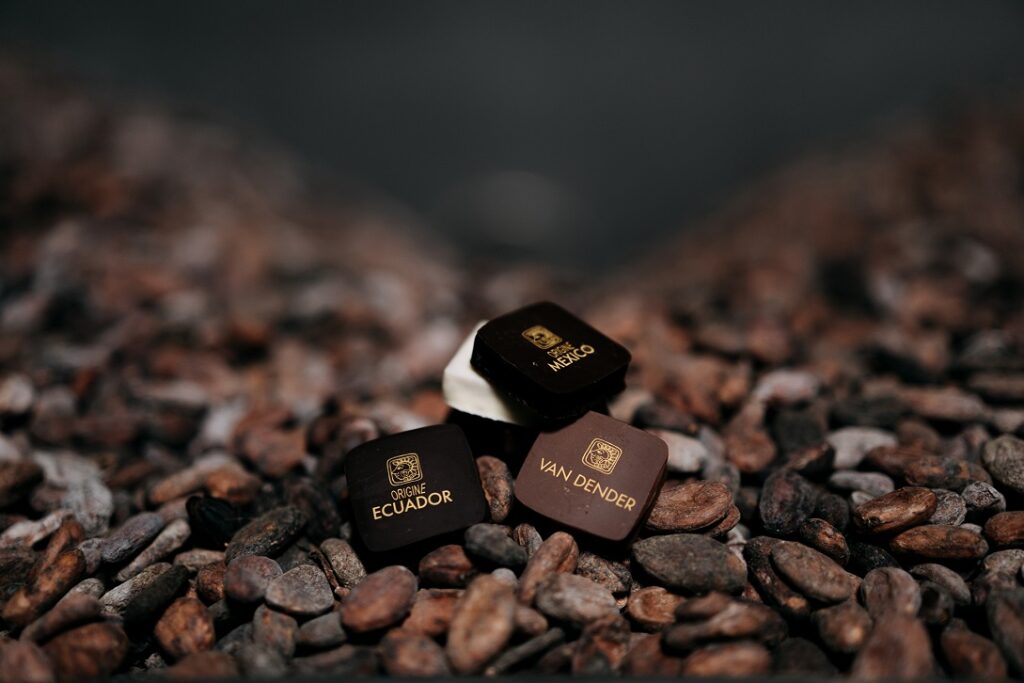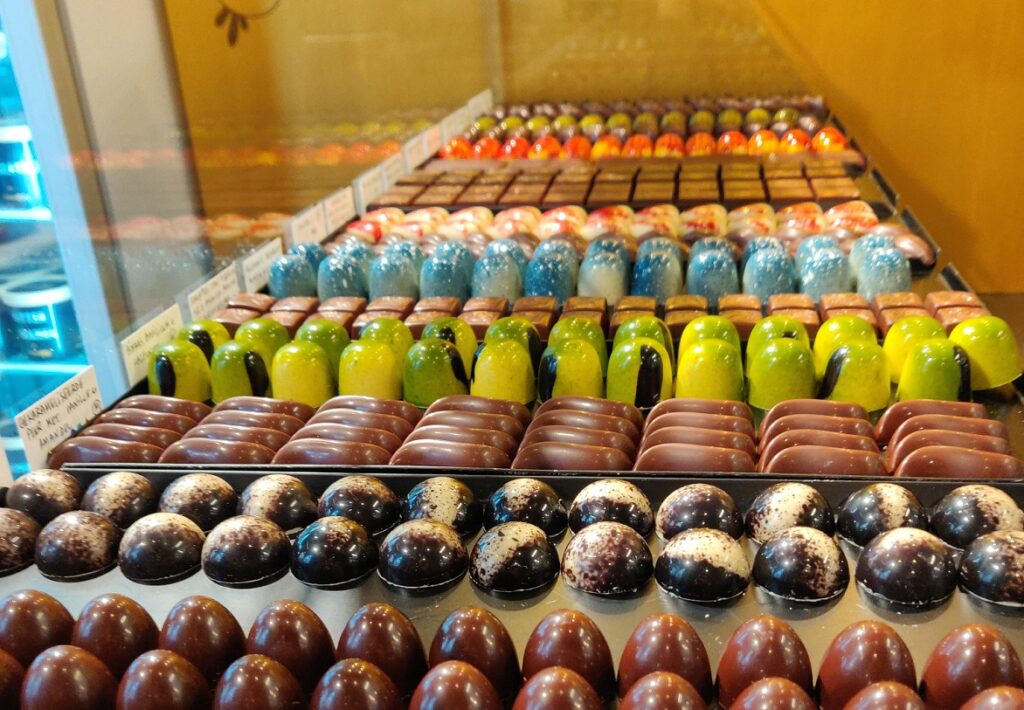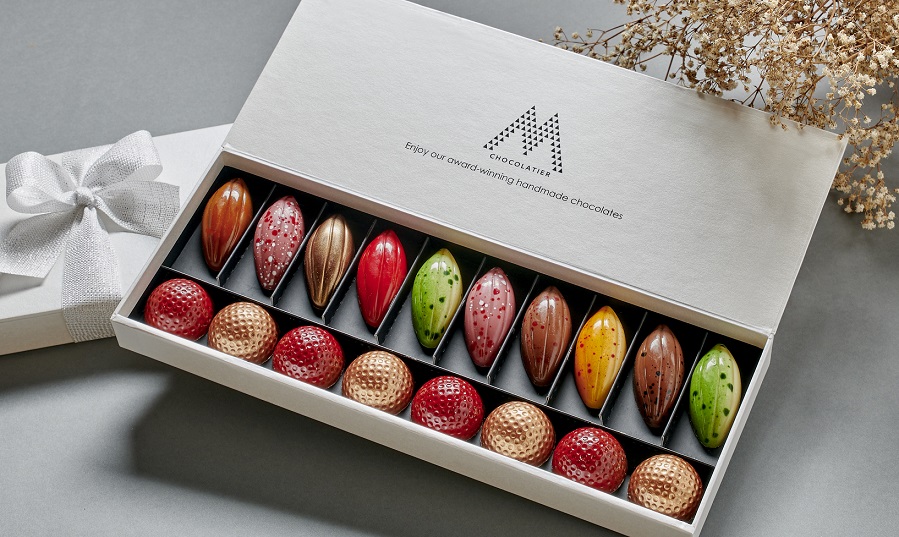Belgium and fine chocolate go together like Scotland and whisky: sure, other people make it, but do they do it as brilliantly? Belgians eat an average of six kilograms per person annually, its producers make Belgium the second largest exporter of chocolate in the world, and the country boasts over 2,000 brands. That makes it a delicious challenge to taste even a fraction of them.
Brussels has many well-known chocolate makers, from long-standing artisanal producers Pierre Marcolini, Mary and Wittamer to bigger brands like Godiva, Neuhaus and Leonidas. But what about smaller or newer producers that are also making high-quality chocolate? All handcraft their chocolate with love, often from bean (selecting and roasting cocoa beans) to bar (saleable products).
Here is a round-up of outstanding, lesser-known artisanal chocolate makers in the Brussels area and other Belgian cities – all of which are on gastronomic rater Gault & Millau’s list of the finest Belgian chocolate makers.
Frederic Blondeel: Brussels
Named the Best Chocolatier of Brussels in 2019 by Gault et Millau, Blondeel’s bean-to-bar chocolate is made at his Koekelberg factory, which is also a coffee roastery, shop and indoor-outdoor coffee and ice cream bar. It’s the only chocolate-making factory in the city, and you can see it operating behind glass on site.
“When I eat my chocolate, I always want more,” Blondeel says. “We have found the right balance between bitterness, fruitiness, acidity and sugar. We even do great chocolate in 100 percent cocoa, something in which you cannot make any mistake, like a three-star restaurant.”
From three generations of coffee roasters, Blondeel broadened his bean range to cover chocolate. “Roasting cocoa beans is a discovery, a way to reveal their secret flavours, textures and tastes,” he says. Blondeel started making chocolate at home when his mother bought him a machine for his 20th birthday. During Belgian military service, he befriended Marcolini and both decided to make careers in chocolate. They even started out together. Then he worked a year with chocolatier Paul Wittamer and finally went out on his own.
Blondeel’s ingredients include cocoa beans from south Asia to Latin America, organic matcha tea and jasmine from Japan, hazelnuts and almonds from Sicily, vanilla from Tahiti, Belgian speculoos and homemade coffee. He offers tablets, pralines, ganaches (made with chocolate- and cream-based fillings), truffles, and even vegan and sugar-free chocolates. He also makes chocolate spreads as well as hazelnut and almond pastes, other confections and ice creams.
“I love chocolate. I sleep with it, I travel with it,” Blondeel says. “My life is all chocolate. I love the material, its smell, roasting beans and handwork. Cocoa bags on a truck are beautiful. A full ship of cocoa is, like, ‘wow!’ If you fall in love, you don’t know why.” While Blondeel has just one shop under his name, his products are also sold at Atelier Sainte Catherine, Elisabeth shops and online.
Benoît Nihant, Brussels, Liège
As bean-to-bar as a chocolate maker can get, Nihant will harvest cocoa from its own plantation in Peru for the first time last year. It acquired several hectares of land in 2016, converting it with the Peruvian government’s encouragement, which was happy to see land use shift from coca to cocoa production. Nihant also sources beans from 14 family-owned plantations from Central and South America plus Madagascar to produce grand cru chocolates,” says founder Benoît Nihant.
After studying engineering and briefly working at a military equipment company, Nihant switched to making chocolate, apprenticing at Wittamer before creating his own company in 2005. His wife, Anne, quit her job in banking to join him. “When we started our chocolate adventure, we went to Comme Chez Soi and Villa Lorraine to ask chefs for their feedback, and we walked away with our first orders,” Nihant says. A dark chocolate-filled liquid caramel infused with passion fruit and Samba floral tea, once served at Comme Chez Soi, is still sold.
To maintain the integrity of each plantation’s terroir, the Nihants never mix beans. “We can describe chocolate as we do wine,” says Nihant. “Our chocolate is the expression of rare beans. We link the farmer to the finished product.”
The Nihant operation uses unique antique machinery: their roaster is from the 1950s, which is slower than modern models so beans can be better controlled. Their 18th century grinder does not transfer heat so the taste stays unchanged.
Their best seller is sea-salted caramel coated in dark chocolate that looks like a small truffle with cocoa powder on top. Nihant has two shops in Brussels – Ixelles and Stockel – plus three in the Liège region and online. The workshop, which offers tours and will soon double in size, is in Liège.
Centho: Brussels, Duisburg, Kampenhout
This small family business, led by Geert Decoster, renowned for its mouth-watering salted caramel chocolate, won of the world gold medal at the 2013 International Chocolate Awards. It is now placed on the pillows of guests at the London Ritz Hotel and distributed at Ascot Racecourse in England.
Decoster sources cocoa beans from 22 different countries, which are turned into basic liquid chocolate by several partner processors. “You must first taste the chocolate, then other ingredients in the background,” he says, noting the difference in cocoa terroirs. “For example, we make Columbian chocolate with yuzu not yuzu chocolate.” His company is part of the Cacao Trace project, which pays farmers more for higher quality beans.
Centho adds flavours to chocolate by layering, never mixing. So instead of combining strawberries and chocolate, Decoster adds a layer of strawberry jam to better preserve the chocolate’s flavour. “It’s complicated to produce it this way,” he admits. “It’s a lot of hand work. We need a lot of time.”
Centho – a combination of the first three letters of Decoster’s children’s first names – is a family business as his daughter Centa and son Thomas are now involved, along with his wife Els. It has a flagship store in Tervuren and a workshop in Kampenhout.
Besides its signature caramel chocolates, Centho makes dark and milk chocolate tablets, champagne and other truffles, chocolate-covered raisins and coffee beans, shortbread and marshmallows dipped in chocolate, ice cream and more. He slashes sugar to focus on ingredients, like Sicilian pistachios. For example, his praliné – a filling made of ground, roasted, caramelised hazelnuts and/or almonds with sugar (not to be confused with praline, meaning filled chocolate) – is 80 percent nut and 20 percent sugar compared to the industry average of 50:50.
Laurent Gerbaud: Brussels
Gerbaud, Gault & Millau’s Chocolatier of the Year in 2021, is known for innovative creations, like his dark chocolate pralines filled with black olive and Peking tea, infused with black olives/olive oil and jasmine tea/passion fruit ganache respectively.
Gerbaud’s passion for flavours and travel prompted a two-year stay in China, which is reflected in his logo: a pictogram that means chocolate in Mandarin, where his initials LG are hidden. “I learned a lot living in Shanghai, making a small, illegal production in my apartment with a chocolate delivery service before Uber’s time,” Gerbaud jokes. “Back in Belgium, I started a similar production in my grandmother’s basement. But today, everything is legal.”
Gerbaud plays with the mix of sourness, sweetness, bitterness, umami and saltiness. “I work only with chocolates made from aromatic cacao beans, organic most of the time and always fair trade,” he says. His exotic ingredients include Shanghai orange, Madagascar pepper and Izmir figs. In tablets, unusual examples are green cumin milk chocolate and dark chocolate with either bergamot or sweet chilli.
He also offers chocolate-coated dried fruits like pears and peaches, marzipan and caramel, as well as ice creams. His best sellers include the Mondrian box of 65 pieces that looks like it was designed by the painter himself. He also makes delicious homemade hot chocolate with 70 percent cocoa. “I always look for an addictive effect,” Gerbaud says. “You try one and very quickly you want another one. It is a totally legal drug!”
All Gerbaud’s offerings are handcrafted in an open kitchen, which can be viewed behind glass at his flagship shop and tearoom at Mont des Arts (there are other shops in the Grand Place and Uccle, plus a booth at the Sunday market in Boitsfort and an e-shop). Gerbaud is also one of the only Brussels area chocolatiers to offer chocolate-making workshops.
Jérôme Grimonpon: Brussels
Grimonpon, Gault & Millau’s Brussels Chocolatier of the Year 2020, is a certified pastry chef from Paris, who worked for 13 years for royal chocolatier Mary. At his Uccle shop, opened in 2018, people can buy his chocolate as well as see him at work.
He is happy to stay relatively small and exclusive. “If we grow too much, I will become a business manager,” he says. “I want to stay in my workshop. That's really what drives me every morning to get up.”
Grimonpon says minimising sugar lets the natural flavours of terroirs shine. “I'm not going to sweeten chocolate too much or it's useless,” he notes. His shop offers 40 types of pralines and truffles; terroir bars, including 100 percent cocoa and sugar-free options; spreads such as hazelnut, dark chocolate and biscuit; cocoa powder and hot chocolate-making kits; chocolate-coated dried orange slices and more.
Award-winning praline examples are Gold with 70 percent dark chocolate decorated with a gold leaf; Silver made with yuzu jelly and matcha tea ganache; and Belgian Bronze filled with fig jam and thyme ganache. He creates a monthly ephemeral praline so there is always something new to taste. He also makes Cabosse, a life-size chocolate cacao seed (actually moulded from one) that’s filled with chocolates. Upon request, Grimonpon even makes custom chocolate works of art like a car or baby carriage.
Jitsk: Brussels (BS40), Antwerp
The chocolates and ice cream by Jitsk Heyninck are all about “quality, sustainability and craftsmanship” with almost no additives. He focuses on fillings and uses modern techniques to maximise their quality, such as candying oranges under vacuum pressure. “We mix traditional chocolate-making with modern influences and techniques for different experiences,” Heyninck says. “We carefully source ingredients, such as cream directly from the farm. Our approach is no-nonsense - how it should be done.”
Heyninck went to culinary school in Antwerp, interning as head pastry chef at Zilte restaurant – then a two-Michelin-star restaurant (now three-star) by renowned Chef Viki Guenes – before going out on his own at just 19. He initally produced chocolates in Chocolate World, a global producer of equipment for the chocolate industry in Antwerp. In 2015, he moved into his current shop in the Antwerp city brewery De Koninck, and last year began selling chocolates in Brussels at the shop BS40, which stands for “Butter Street 40,” near the Grand Place.
Jitsk offers 350 products, including pralines, bars, ice cream and chocolate-coated ice cream pops. Stand-out pralines are Coffee Shot with a real shot of espresso encased in dark chocolate, orange-saffron, Brhum (Belgium rum)-ginger and caramel-seasalt. A new product line called Puck was created for people with gluten intolerance, lactose allergies or diabetes, targeting kids from a packaging standpoint. These products contain only plant-based ingredients, using coconut milk powder in place of cow milk and Zusto sweetener instead of sugar.
“It’s about understanding ingredients, getting the best out of everything and respecting ingredients with the least waste possible,” says Heyninck, who also sells at the Villa Lorraine deli and online.
Vanessa Renard: Brussels
Gault & Millau’s Best Chocolatier of Brussels in 2022, Renard began chocolate-making courses in 2015 while working in the banking sector. Three years later, she opened her chocolate shop in Etterbeek, where she was born. “I followed an evening school to learn about chocolate and instantly liked the freedom of creativity it gave,” she says. “Since then, I never stopped making chocolates.”
Renard creates figurines such as animals, plants and seasonal shapes. She also offers lollipops and message bars that say thank you and more. The visuals match the quality of her handmade, organic chocolate produced with fair-trade cocoa beans from Peru, Haiti or Madagascar. “You can find authentic flavours from cacao in every product, tasting something pure and unadulterated,” she says.
Renard is best known for her dark chocolate pralines with spices and fruits, as well as vegan and sugar-free options. Standout products are a double-layered praline with almond praliné and bergamot jelly and a sugar-free peanut bar. You can watch Renard making chocolate in her see-through workshop, where everything is sold, as well as in an e-shop.
Mi Joya: Tervuren
Chocolate-making duo Caroline and Nicolas Aussems’s studied hotel management and originally aimed to open a hotel or restaurant, but after working with several chocolatiers, they became sweet about joining the profession themselves. The inspiration came from a trip to Mexico when they visited a cocoa plantation. After making chocolate at home, using small machines, they set up their Tervuren cocoa bean roastery, workshop and store Mi Joya (meaning “my jewel” in Spanish).
Mi Joya focuses on cocoa terroir from various countries (Ecuador, Brazil, Venezuela, Mexico, India, Indonesia and Cameroon). “Starting with the basic product makes us feel closer to nature and gives us more satisfaction as we are controlling the whole process from cacao bean to chocolate bar,” says Caroline Aussems.
They don’t mix cacao beans, so they have single-origin chocolates. “And each of these chocolates has its own tastes: red fruit, hazelnut, caramel, coffee. Not because we have added any extra ingredients to the chocolate but because of the beans themselves,” she says.
Specialities include dark chocolate with bergamot, milk chocolate with cocoa nibs, Florentines (chocolate-coated chewy toffee), praliné hearts and ice creams. Mi Joya also offers chocolate-making and -tasting workshops for adults and children a few times a year – a chance for others to create their own jewel.
Van Dender Chocolates, Groot Bijgaarden
Herman Van Dender first became known as a pastry chef, then as an ice cream and chocolate maker. He has won awards in all capacities, including gold (1995) in the World Pastry Cup, and was named Chocolatier of the Year 2023 for Brussels by Gault et Millau. In 2008, Van Dender became an official supplier to the Belgian Court, and produced showpieces and dessert for the wedding of Prince Laurent and Princess Claire. He has also been an expert on the TV show Bake Off Vlaanderen for all seven seasons on Flemish channel Vier.
Van Dender followed in the footsteps of his chocolatier father, who first opened a store in Schaerbeek in 1957. The young Van Dender went to chocolate-making school and did international internships with several famous chocolate makers before settling into his father’s business. In 1988, he took it over completely and moved operations to Dilbeek, a few kilometres from the Groot Bijgaarden castle. Today, he has a factory, which can be seen at work via glass in a retail shop.
Van Dender specialises in bean-to-bar, single-origin chocolate tablets, drops and pralines. He even produces sugar-free chocolate. He sources exclusive cocoa beans, primarily from South America. “When you eat chocolate, it makes you happy,” Van Dender says. “And my chocolate always makes you want to eat one more.” He deems chocolate good if one piece leads to a second or third. Buy as many as desired at his factory store or via his webshop.
The Cacao Project: Mechelen
The Cacao Project is the life’s work of Pieter Vaes, whose bean-to-bar sources cocoa from Central America, focusing on terroir and unique tastes. “We want people to have a feeling of excitement mixed with curiosity, trying to discover the flavours.”
Vaes went to culinary school, aiming to be a caterer, but a field trip to a chocolatier changed his mind. He interned for two years and worked for five with Dominique Persoone of The Chocolate Line, deepening his knowledge of the “mythical and magical world of cacao”. In 2016, when he turned 30, he ventured out on his own.
The Cacao Project’s popular products are tiramisu, apple strudel and calamansi (southeast Asian lime)-mint pralines. “We like to be creative with our flavours, and at the end of the year, we push that to the limits with three holiday specials.” For example, last year Vaes created a black forest praline with sour cherry gel, pine nut praliné smoked with spruce wood, dark molasses ganache and a cherry drowned in kirsch. “This chocolate is based on the feeling you get when it is a very cold but beautiful day outside and your cheeks tingle,” he says.
Next year The Cacao Project will open a second, larger shop in Mechelen, where it will also produce pastries and gelato.
YUZU by Nicolas Vanaise & C. Ghent
Chocolate making by the Vanaise family goes back five generations to the great, great grandfather of Nicolas, with whom he shares his name, who opened a pastry-chocolate store in Ghent in 1854. In 2003, the younger Nicolas, a former art historian and archaeologist specialising in the Middle East, combined his passions, opening YUZU to create chocolate works of art.
YUZU specialises in pralines with captivating visuals and flavour combinations. Each represents a story linked to a historical figure, literary reference or destination. For example, Pêcheurs de Perles, topped with blue chocolate (dyed with pea flower) and “shells washed ashore” (crushed puffed rice coated in white chocolate) refers to a 19th century opera and contraband, such as coffee and tobacco, aboard the ships of pearl fishermen on the Red Sea in the 1930s. Galla Placida includes hazelnut praliné with colatura, a fermented anchovy sauce made from an old Roman recipe, in honour of the daughter of a Roman emperor. Ispahan with raspberries and Damascus roses was inspired by the poem “The Gardener and Death,” in which the gardener runs away from his rose garden to escape the Grim Reaper. Havana is a throwback to English gentlemen’s clubs with the flavours of whiskey and cigar smoke, while Orinoko’s intense chilli reflects the heat and humidity where the Yanomami tribe live on the Orinoco River.
“A story is the genesis of each chocolate,” Vanaise notes. He also incorporates “wabi-sabi,” meaning “the beauty of imperfection” in Japanese, in his praline designs to have a mineral or stone look. “I’m an archaeologist after all,” he says.
Vanaise sources chocolate from South America, Vietnam and Africa via the Cacao Trace to use in his 150 recipes. Almost all of the bright colours in his pralines are from natural sources, such as spirulina, matcha tea and fruit and vegetable powders. “When I can, I like to use the real McCoy,” he says.
Vanaise is the sole retailer of his chocolates – which include bars, truffles, chocolate-coated homemade marshmallows and seasonal figurines – at the single shop in Ghent, although some are also sold online.
Deduytschaever: Ghent
Voted Chocolatier of the Year for Flanders in 2022 by Gault & Millau, Jannes Deduytschaever only opened his shop two years ago.
Deduytschaever worked with David Maenhout of Chocolatier M for five years before going out on his own. While not yet bean-to-bar, his chocolate is 100 percent artisanal with high-quality ingredients. He sources basic liquid chocolate from several high-end French suppliers and single-origin chocolate from Belgium’s own Callebaut. “I try to be like a three-star restaurant to make my chocolates perfect,” Deduytschaever says. “I’m a bad sleeper because I’m always thinking about what can be better.”
He produces 28 types of pralines such as yuzu and thyme-lemon, ganaches like one with matcha tea and sour cherry gel, “chocolate for students” with dried fruits and nuts on it (students don’t actually buy it) and grand cru bars of single origin that he tempers by hand and moulds for the “perfect crack.” Deduytschaever also makes treats from speculoos and marzipan.
Top-selling products are his Monkey Bar, which is like a homemade Snickers with caramel ganache; chocolate ‘sardines’ filled with crunchy-salty praliné packed in sardine tins. Recently launched are three spreads with 99.6 percent roasted hazelnuts, milk chocolate with 46 percent hazelnuts and 70 percent dark chocolate, respectively.
Deduytschaever notes that everything in his business is synchronised in quality from packaging to taste. He offers a high-end experience that’s accessible to everyone. “I want people to think: ‘Not only is my chocolate a gift for others, it’s a present for myself,’” he says.
The Chocolate Line: Bruges, Antwerp
This family business with father and son chocolate makers, Dominique and Julius Persoone, and wife, mother and CEO, Fabienne, are known for rebellious shapes and experimental flavour combinations. As a result, Gault & Millau has selected The Chocolate Line Chocolatier of the Year 2023.
Dominique, who founded the company, formerly worked as a pastry chef in a three-Michelin-star restaurant in Paris. The Chocolate Line still collaborates with top restaurants and supplies chocolates to Louis Vuitton, Jaguar, and the Belgian and Jordanian royal families. Dominique has also published several books, one of which (Cacao: The Roots of Chocolate) won a 2008 Gourmand award.
The Chocolate Line’s unusual ingredients include spirits (peated whiskey, vodka, sake and cachaça), Cabernet Sauvignon vinegar, sea buckthorn, dried lavender flowers, fresh mint leaves, cilantro, rum-marinated raisins, Japanese cherry blossoms, beetroot, smoked chilli and even grass. Atlanta is a cola ganache with hazelnut praliné and popping candy. Pavillon, a bitter ganache, combines fresh orange juice, clove and Cointreau. Deadly Delicious is charcoal coloured in the shape of a skull with violet nougatine. Dominique Persoone describes his chocolate as “the perfect way to finish a gastronomic dinner.”
The Chocolate Line offers a Rolling Stones-inspired chocolate shooter (sniffer), edible chocolate massage cream, chocolate lipstick, and chocolate pills and message bars. All of the chocolate comes from the company’s cocoa plantation in Mexico, using criollo cacao bean variety.
The company factory is in Bruges but The Chocolate Line building another chocolate factory in Virunga National Park in the Congo, where it aims to promote wildlife conservation as well. It has two shops in Bruges, one in Antwerp and a webshop.
Darcis: Verviers, Liège, Durbuy
Jean-Philippe Darcis, from the agricultural Pays de Herve in Wallonia, features the region’s products like honey and fruit in his chocolates. However, travels the world to find fair trade cocoa beans that will bring “a particular and recognizable note to his creations”.
Darcis cultivated his knowledge of creativity for chocolate with several master chocolatiers, including Paul Wittamer, before launching his first tasting room in 1996 at age 25. A multi-medallist in chocolate, pastry and ice cream, he won gold in the chocolate category at the 2002 World Pastry Championship and three gold medals at the 2015-16 International Chocolate Awards to name a few.
Darcis is known for ganaches, pralines, buttercreams, caramels, customised chocolate letters and macaroons. With the latter, he has a permanent range of flavours, such as salted butter caramel and yuzu, and releases an ephemeral flavour once a month. Darcis also has winter cornered with hot chocolate-making kits that contain a big square of artisan chocolate on a stick. “We make quality products with noble materials. We want each product to be an experience,” he says.
Darcis’s workshop in Verviers has a chocolate-making academy for both amateurs and professionals. He has seven (soon eight) stores in the province of Liège and one store in Durbuy.
Chocolatier M: Knokke-Heist
David Maenhout, the fourth generation of a brewing family, switch from beer to “the wonderful world of chocolate” in his mid-twenties. His passion for food and travel combined with internships in Paris and Barcelona and various courses laid the foundation for Chocolatier M, which he founded in 2005. His fiancé, Isabelle Hertsens, later joined the operation.
“We have created our own unique style by extensively testing and striving for perfection,” Maenhout says. “We try to be innovative and trendsetting. We are known for our gourmet chocolates with a focus on freshness and top quality.” This includes custom creations for Michelin-starred restaurants, top hotels and luxury brands.
Chocolatier M’s signature product is Umami, meaning savoury in Japanese, which is an 80 percent chocolate bar based on roasted sesame and Marushinhonké soy sauce used at Japan’s Imperial Court. Maenhout’s favourites among 45 pralines include yuzu, cassis and aniseed, and yoghurt and passion fruit. Other pralines include fresh fruits like sea buckthorn berries, and herbs and spices like curry. “Every chocolate is unique and has a story,” he says. “We love to travel and bring all of our experiences into our chocolates.”
Chocolatier M was named the first Chocolatier of the Year in Belgium by Gault & Millau and Maenhout was deemed Belgian Chocolate Ambassador by Barry Callebaut, the largest chocolate producer in the world.

